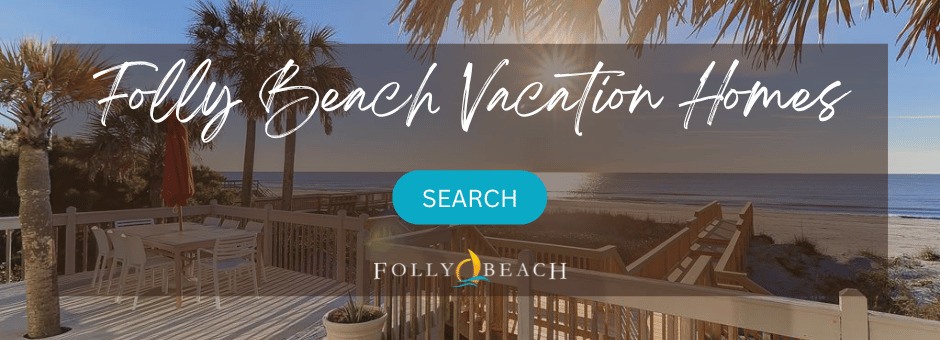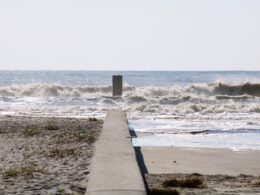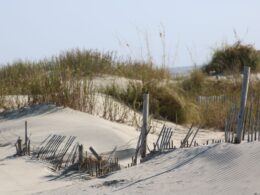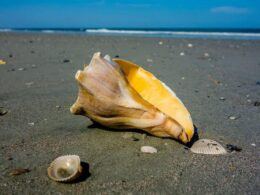Every spring and summer, Folly Beach welcomes some of its most extraordinary visitors — loggerhead sea turtles. These gentle giants return to the same stretch of sand where they were born, repeating a nesting ritual that has taken place for millions of years. From May through October, Folly Beach becomes a vital nesting ground for these endangered animals, and the entire community works together to help protect them.
About the Loggerhead Sea Turtle
The loggerhead sea turtle (Caretta caretta) is South Carolina’s official state reptile and one of the most commonly seen sea turtles along our coast. Adults typically measure about three feet long and can weigh up to 300 pounds. Though they may seem powerful, these turtles face incredible odds — only about one in a thousand hatchlings survives to adulthood.
Loggerheads nest throughout the southeastern United States, but those found on Folly Beach are part of a smaller population than their southern relatives in Florida. Protecting them here is essential to keeping the species strong across the Atlantic.
Nesting Season on Folly Beach
Female loggerheads usually begin nesting in May, digging deep holes in the sand with their back flippers during the quiet hours of the night. Each nest holds around 100 to 120 eggs, which incubate for roughly 45 to 65 days beneath the sand. When the hatchlings finally emerge, usually between July and September, they make their way to the ocean under the light of the moon.
Artificial lighting from homes, vehicles, or flashlights can disorient hatchlings and lead them away from the sea. That’s why residents and visitors are encouraged to follow “Lights Out for Turtles” from dusk to dawn during nesting season — keeping beachfront lights off or shielded and using red filters on flashlights if walking the beach at night.
Threats and Protection Efforts
Loggerheads face numerous natural and human threats. On land, hatchlings can fall prey to crabs, birds, ants, and stray pets. In the water, they must navigate hazards like boat strikes, fishing nets, marine debris, and pollution. Even small actions — like leaving holes in the sand or beach gear overnight — can block or trap nesting females and hatchlings.
The nesting turtles on Folly are closely monitored by the Folly Beach Turtle Watch Program, a volunteer effort operating under the guidance of the South Carolina Department of Natural Resources (SCDNR). These dedicated volunteers patrol the beach daily during nesting season to identify, mark, and monitor nests. They also help relocate nests that are at risk of flooding, record hatch success rates, and educate the public about sea turtle conservation.
The group’s work plays an important role in helping the SCDNR track population trends and protect critical nesting habitats along the South Carolina coast. Volunteers can often be seen early in the morning inspecting tracks, marking nests, or quietly assisting hatchlings to reach the water safely.
How You Can Help Protect Sea Turtles
Whether you live on Folly or are just visiting, small steps can make a big difference in protecting sea turtles:
Fill in holes and flatten sandcastles before leaving the beach.
Take all beach gear home each night, including chairs, tents, and umbrellas.
Never disturb or approach a nesting turtle or marked nest.
Keep exterior beachfront lights off or use turtle-safe amber bulbs during nesting season.
Pick up litter — plastics and trash can be deadly to marine life.
Keep dogs leashed and away from marked nests.
By respecting these simple guidelines, visitors help ensure that Folly remains a safe nesting site for future generations of sea turtles.
Loggerhead sea turtles remind us that Folly Beach is more than just a vacation destination — it’s a living ecosystem that depends on our care and awareness. As the locals say, protecting paradise isn’t just for people — it’s for every creature that calls this island home.
For more information on sea turtle conservation, visit the South Carolina Department of Natural Resources Sea Turtle Program.













